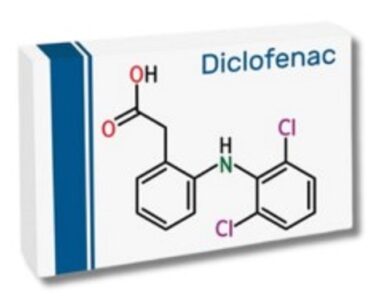
Acne Vulgaris
Acne, or Acne Vulgaris, is a common skin disorder characterized by the appearance of pimples, typically on the face, forehead, chest, shoulders, and upper back. Several factors, such as heredity, cyclical changes in hormone levels, stress, high humidity, and oily or greasy personal care products, might contribute to this problem. Teenagers are most vulnerable to acne, but anyone can get it.
OVERVIEW
Acne is a common skin disorder caused by the clogging of pores by excess hair, sebum (an oily fluid), germs, and dead skin cells. Clogging causes many forms of acne, including blackheads, whiteheads, nodules, and cysts. Know that you are not alone in suffering from acne. It’s the most widespread skin problem in the world. Most people have acne at some point in their lives, with estimates ranging from 80% to 90% for those between the ages of 11 and 30.
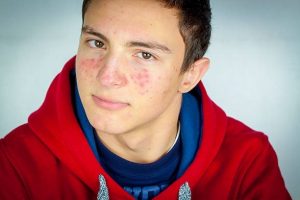
WHO IS GENERALLY CONCERNED?
Acne is most common in adolescents and young adults because of hormonal changes, but many people still deal with it well into adulthood. In some cases, adulthood is the first time a person has acne.
ACNE IN TEENAGERS
An increase in the androgen hormones (particularly testosterone) contributes to acne, which affects both sexes. These hormones often reach their highest levels during adolescence.
WHAT PARTS OF THE BODY ARE MOST LIKELY TO BE AFFECTED?
Acne typically appears on the face, forehead, chest, shoulders, and upper back. These are just some areas where you’ll find the most oil glands. However, they’re spread out all over your body. As acne’s severity increases, so do the effectiveness of different treatments. Acne ranges from being very mild (a few sporadic breakouts) to moderately severe (many inflammatory papules) (nodules and cysts).
ACNE TYPES?
A variety of acne manifestations exist. That group consists of the following:
- Blackheads: Acne is the accumulation of dead skin cells and oil in the open pores of the skin. It may appear as though dirt has settled in the bump, but the dark areas are actually the result of an abnormal reflection of light off the blocked follicle.
- White Heads: closed bumps caused by oil and decaying skin.
- Papules: Inflamed papules appear as tiny red or pink pimples.
- Pustules: Pimples that drain pus are called pustules. It’s as if there were crimson rings around whiteheads. Picking at or scratching them might leave scars.
- Pityrosporum folliculitis, or “fungal acne,” This kind results from an overabundance of yeast in the hair follicles. They’re prone to developing an itch and swelling.
- Nodules: Pimples that are solid and embedded in the skin. Big ones hurt; bad ones are big.
- Cysts: Whiteheads and blackheads loaded with pus. Causes scarring if touched repeatedly.
Obviously, Having any of these acne types might be embarrassing. Seeking medical advice early can help doctors recommend the most effective course of treatment.
WHY YOU HAVE ACNE?
Androgen hormones, primarily responsible for acne, become active between adolescence and early adulthood. Acne can develop when a person’s oil glands, skin surface germs, and fatty acids interact in a way that triggers an immune response.
Acne can be triggered or made worse by a number of factors:
- Hormone swings prior to menstruation.
- Trying to heal acne scars by picking at them.
- Wearables that cover the body and head, such as coats and hats, and protective caps for contact sports.
- High humidity and other forms of humid weather pollution.
- Being in a greasy environment, or using oily or greasy personal care items (such thick lotions, creams, hair pomades, and waxes) (such as working at a restaurant where there are greasy food surfaces and frying oil).
- Acne can be aggravated by stress because of the increased production of the hormone cortisol.
- Various pharmaceuticals
THE CONNECTION BETWEEN CHOCOLATE AND SKIM MILK
Acne has been linked to certain foods and diets in certain research. Acne outbreaks may be exacerbated by consuming sugary foods, whey protein, or skim milk. These are not connected directly to chocolate.
How bad can acne really get?
Dermatologists use a severity scale to rate acne:
Grade 1:
- Primarily comedowns (both white and black), with some smaller papules and pustules, are thrown in for good measure.
Grade 2 acne (also known as moderate acne or pustular acne):
- Pimples and blemishes all over your body, especially your face.
Grade 3 acne (also known as nodulocystic acne):
- outbreaks of papules, pustules, and even occasional nodules of inflammation. You may also feel discomfort in your back and chest.
Grade 4 (extreme nodulocystic acne):
- Enormous numbers of painful, inflammatory pustules and nodules.
ACNE TREATMENT
Externally administered drugs:
- Leave-on gels and washes containing benzoyl peroxide are sold over-the-counter (try Clearasil®, Stridex®, or PanOxyl®). It works by killing the bacteria that live on the skin’s surface and contributes to acne’s severity. To avoid skin irritation, use a wash or a lower concentration. One common negative effect is irritation (dryness).
- Acne sufferers can get salicylic acid in the form of a wash or lotion at a local drug store. It aids in the removal of the injured skin’s outermost layer. To keep hair follicles unblocked, salicylic acid removes dead skin cells.
- Azelaic acid is a naturally occurring acid that can be found in cereal grains like wheat, rye, and barley. It relieves inflammation and kills any bacteria or germs on the skin.
To avoid the clogged pores that are the first indication of acne, retinoid (derivatives of vitamin A) like Retin-A®, Tazorac®, and Differin® (now over-the-counter) are used. The vast majority of people can benefit from retinoid treatment. These drugs cannot be administered selectively; rather, they must be applied to the full area of skin prone to acne. Irritation is the most common adverse reaction, but it typically subsides after a few days on the drug and some moisturizing.
- Antibiotics, particularly topical antibiotics like clindamycin and erythromycin, can reduce the overgrowth of bacteria just below the skin’s surface, which can exacerbate and even cause acne’s characteristic swelling. A combination of antibiotics and benzoyl peroxide improves their efficacy.
- Inflamed acne may benefit from dapsone (Aczone®), a topical gel with antibacterial qualities. It will help if you put it on your skin twice a day.
Drugs administered orally (by mouth):
- Antibiotics, Moderate to severe acne is typically treated with antibiotics, particularly tetracycline medicines like minocycline and doxycycline.
- Oral contraceptives: To reduce acne flare-ups during menstruation, try an oral contraceptive. To treat acne, the FDA has authorized three different types of medicines. The trademarks Estrostep®, Beyaz®, Ortho Tri-Cyclen®, and Yaz ® are only a few examples.
- Isotretinoin : Among the most effective acne treatments, an oral retinoid is reserved for the most severe instances. Acne is exacerbated by isotretinoin because it reduces the size of oil glands. Besides causing dryness, the most prevalent adverse effect, it can also lead to fetal abnormalities. Some data imply an uptick in both ulcerative colitis and depression. Due to these potential side effects, all drug users must enroll in iPledge, a government-sanctioned risk management programe.
Different Treatments:
Obviously, Your doctor may recommend one of these alternative treatments, or they may recommend using them in conjunction with medication, for your specific health issue.
- Steroids. Rarely, steroids are injected into big nodules to decrease inflammation and cure severe acne.
- Lasers: Lasers are now utilized mostly for treating acne scars. Scarred collagen under the skin can be heated using a laser, prompting the body’s wound healing reaction to generate fresh, healthy collagen. Doing so promotes the development of new skin to take its place. There are two main categories of laser resurfacing: ablative and non-ablative. Your dermatologist will examine your skin and acne scars to decide which option is best for you.
- Peeling Agents or Chemicals: This procedure involves the use of chemical peels to remove the outer layer of damaged skin. When the outer layer of skin is peeled away, new skin grows in typically that is smoother and helps minimize acne scars.
The Varieties of Acne and Their Treatments
Acne, both black and white
Due to a buildup of dirt, oil, and dead skin cells in the pores, these become visible. A white or flesh-colored lump will appear if the pore shuts up. Acne whiteheads.
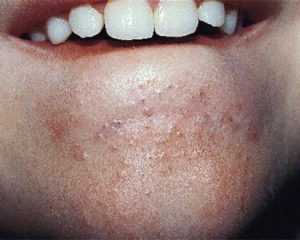
Acne and other forms of black spottiness on the skin
A blackhead forms when a pore becomes clogged with particles but does not close. Never bother washing the black specks away, thinking they are dirt. Your acne will get much worse.
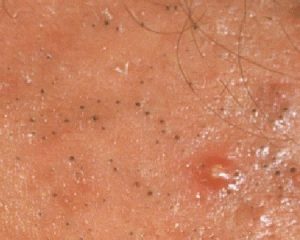
Blackhead and whitehead removal
Dermatologists advocate taking a retinoid to clear up clogged pores. Adapalene is a retinoid. One can purchase over the counter. Use a benzoyl peroxide wash, too. As a result, it can aid in the elimination of excessive P. acnes bacteria.

Intractable blackheads and whiteheads
Allow the treatment to take effect for at least a few weeks, preferably more. The next step would be a trip to the dermatologist if the spots were still visible. Remaining a comedo (the medical word for a blackhead or whitehead) could be useful. Using stronger acne medication available only with a doctor’s prescription is another choice.
 Early pimples
Early pimples
Small, red bumps appear when oil, germs, and dead skin cells push deeper into the skin, triggering inflammation (redness, swelling). Acne papules are the medical term for these bumps. The texture is rough. Lots of bumps can make the skin feel rough, like sandpaper.
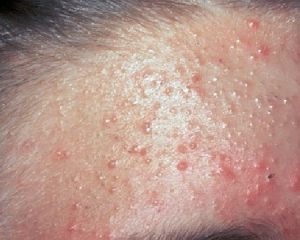
Using Papule Treatment
If you have this kind of acne breakout, using an acne face wash with benzoyl peroxide or salicylic acid twice a day may help clear it up. Seeing a dermatologist can be beneficial if you have many blemishes.
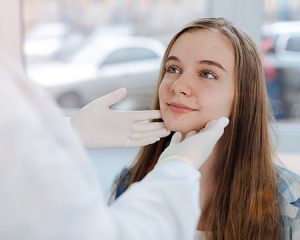
Acne that is full of pus
Obviously, We can term this acne bump a pustule in the medical community. These bumps are similar to papules, but pustules have a yellowish fluid inside of them. These typically have a yellow or white spot in the middle.
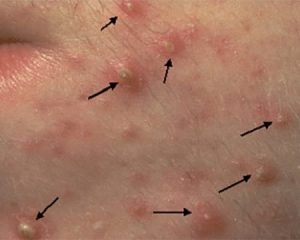
Getting Rid of Pustules
Still, Use a benzoyl peroxide or salicylic acid-based facial cleanser to eliminate acne. Please don’t pop these. It may make acne worse. If your treatment hasn’t shown improvement after six to eight weeks, you should see a dermatologist.
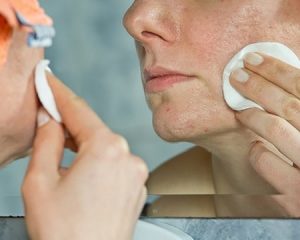
nodules and cysts of acne
Because of how deeply these acne scars enter the skin, they are often permanent when they heal. A visit to a doctor is in order if your acne looks like this. Less severe permanent scarring will result from prompt treatment t.
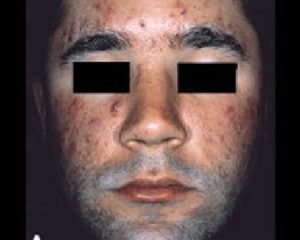
Clear skin is visible to nearly everyone who suffers from acne.
Hence, No one is immune to the feeling that no acne treatment will ever work. Have faith and keep trying. There is effective treatment available. and a visit to the dermatologist may be necessary.
Fareed Pharma world (https://fareedpharma.com).


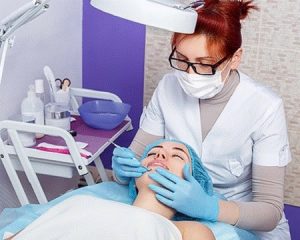 Early pimples
Early pimples